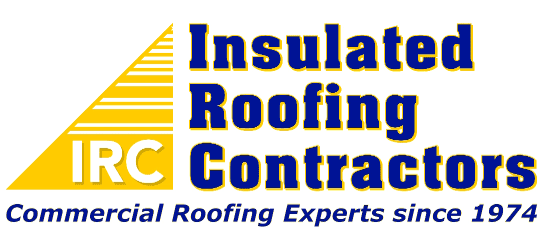Selecting the right commercial roofing system can feel overwhelming with so many roofing materials comparison options available. The wrong choice could cost your business thousands in repairs and replacements down the road. However, the best commercial roof for your building depends on several key factors that, when carefully considered, will guide you to the perfect solution.
Understanding these factors upfront saves money, prevents headaches, and ensures your roofing investment protects your business for decades to come.
Understand Your Building’s Use and Structure
Your building’s purpose and structural design significantly influence which commercial roofing options will work best. A manufacturing facility with heavy equipment requires different considerations than a retail store or office building.
Buildings with flat or low-slope roofs often benefit from single-ply membrane systems like TPO roofing or EPDM roofing. These flat roof types provide excellent waterproofing and are cost-effective for large commercial spaces. TPO roofing offers superior energy efficiency with its reflective white surface, while EPDM provides exceptional durability and weather resistance.
For buildings that can support additional weight, metal roofing benefits include superior longevity and fire resistance. Standing seam metal systems work particularly well on warehouses and industrial facilities where aesthetics take a back seat to performance.
Consider your building’s HVAC systems, foot traffic patterns, and any rooftop equipment when evaluating roofing system selection. These elements affect installation requirements and long-term maintenance needs.
Factor in Local Weather Conditions
Your geographic location plays a crucial role in determining the most suitable industrial roofing solution. Regions with extreme temperature fluctuations demand materials that can expand and contract without cracking or failing.
Hot climates benefit from reflective roofing materials that reduce cooling costs. TPO and spray foam systems excel in these conditions by reflecting UV rays and providing excellent insulation. Cold climates require materials that won’t become brittle or crack during freeze-thaw cycles.
High-wind areas need roofing systems with superior attachment methods. Mechanically fastened systems often outperform adhesive-only installations in hurricane-prone regions. Similarly, areas with heavy snow loads require structural considerations that may eliminate certain lightweight options.
Coastal buildings face salt air exposure, making material selection critical. Some metals corrode quickly in marine environments, while EPDM and spray foam systems resist salt damage effectively.
Compare Lifespan vs. Cost
Commercial roof lifespan varies dramatically between materials, affecting your total cost of ownership. While initial installation costs matter, the best value comes from balancing upfront investment with long-term performance.
Built-up roofing systems typically last 15-20 years and offer lower initial costs, making them attractive for budget-conscious projects. However, they require more frequent maintenance and eventual replacement.
Single-ply membranes like TPO and EPDM provide 20-30 year lifespans with minimal maintenance requirements. Their moderate installation costs combined with excellent longevity often deliver the best value proposition.
Metal roofing systems command higher upfront investments but can last 40-50 years with proper maintenance. The extended lifespan often justifies the initial expense, particularly for buildings planning long-term occupancy.
Spray foam roofing offers unique advantages with its seamless application and ability to be recoated to extend its lifespan indefinitely. This system provides excellent return on investment for buildings with complex roof geometries.
Consider Maintenance and Repair Requirements
Different roofing systems demand varying levels of ongoing attention. Understanding maintenance requirements helps you budget accurately and plan for long-term building operations.
Spray foam systems require periodic recoating every 10-15 years but offer easy spot repairs when damage occurs. Their seamless nature eliminates many common leak points found in other systems.
Single-ply membranes need regular inspections to check seams and flashings but generally require minimal maintenance. When repairs are needed, they’re typically straightforward and cost-effective.
Metal roofing requires periodic inspections for loose fasteners and sealant maintenance but offers excellent durability. Proper installation and maintenance can prevent most common issues.
Consider your facility’s maintenance capabilities and budget when selecting roofing materials. Some systems require specialized contractors for repairs, while others can be maintained by general building staff.
Work With a Contractor Who Understands Your Goals
Partnering with an experienced roofing contractor makes the difference between a successful installation and costly mistakes. Look for contractors with extensive experience in your specific building type and chosen roofing system.
The right contractor will evaluate your building comprehensively, considering structural capacity, local building codes, and your operational requirements. They should provide detailed comparisons of suitable options rather than pushing a single solution.
Verify that your contractor carries appropriate licensing, insurance, and manufacturer certifications for your chosen roofing system. These credentials ensure proper installation and protect your warranty coverage.
Ask for references from similar projects and inspect their completed work when possible. A quality contractor will gladly share their portfolio and connect you with satisfied customers.
Making the Right Choice for Your Building
Selecting the best commercial roofing system requires careful evaluation of your specific needs, local conditions, and long-term goals. By considering your building’s structure, climate factors, lifecycle costs, and maintenance requirements, you can make an informed decision that protects your investment.
Remember that the lowest initial cost rarely provides the best value. Focus on finding the optimal balance between performance, longevity, and total cost of ownership for your unique situation. Contact us today to get expert guidance from the team at IRC. We’ll inspect your building, explain your options, and recommend a solution built to last.
